The concepts covered in this fact sheet go beyond those seen in high school. It is intended as a supplement for those who are curious to learn more.
Art in the Middle Ages was expressed primarily through architecture. It was during this period that architects advanced building standards, enabling the construction of larger, heavier and more solid buildings. The growth of these buildings was attributable to the context of peace and the great agricultural abundance brought about by feudal rule.
In concrete terms, there were two main trends during this period. From the 10th century onwards, Romanesque art developed. These architectural principles dominated new construction until the 12th century. It was at this point that Gothic art gradually took the place of Romanesque. However, Gothic art didn't replace Romanesque art overnight; the two genres existed side by side for several decades.
Romanesque art is an architectural, pictorial and decorative style. The decorations (paintings, sculptures) of Romanesque art are directly linked to the architecture, as they are integrated into it. Romanesque art has many influences: its style and ideas are drawn from the Carolingian Renaissance, Antiquity, the Byzantine Empire, the Orient and the Celts.
Originating in Northern Italy, Romanesque art was born in 1000. It was at this time that the first Romanesque churches were built. They were characterized by their inverted ship shape. This shape inspired the name “ nave ”, designating the main part of the church. This is the section of the church between the façade and the choir.
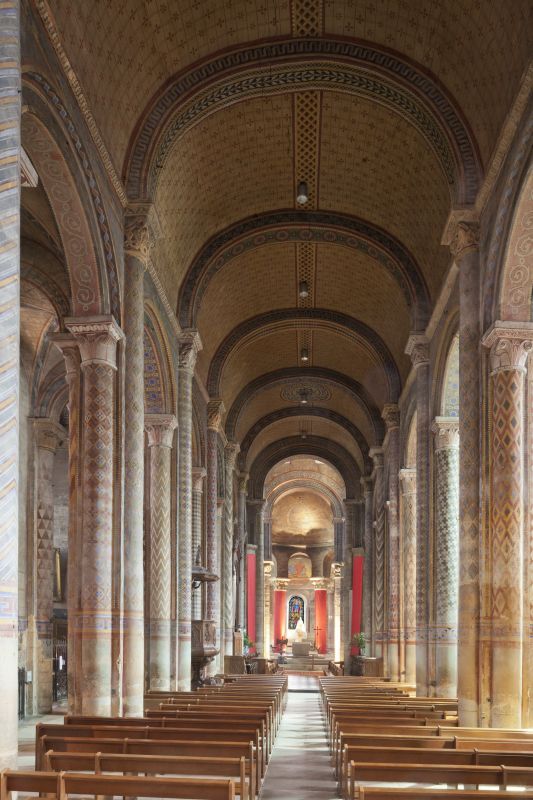
The ceiling of a Romanesque nave: Notre-Dame-la-Grande church in Poitiers
Gradually, the Romanesque style spread throughout Europe. By this time, many churches had been destroyed by barbarian invasions or fire. For this reason, a vast reconstruction program took place, and architects took advantage of the opportunity to improve construction methods and materials.
Stone buildings gradually replaced wooden ones, which were more susceptible to fire. Large religious buildings such as abbeys, monasteries and churches are virtually the only structures to feature Romanesque architecture.
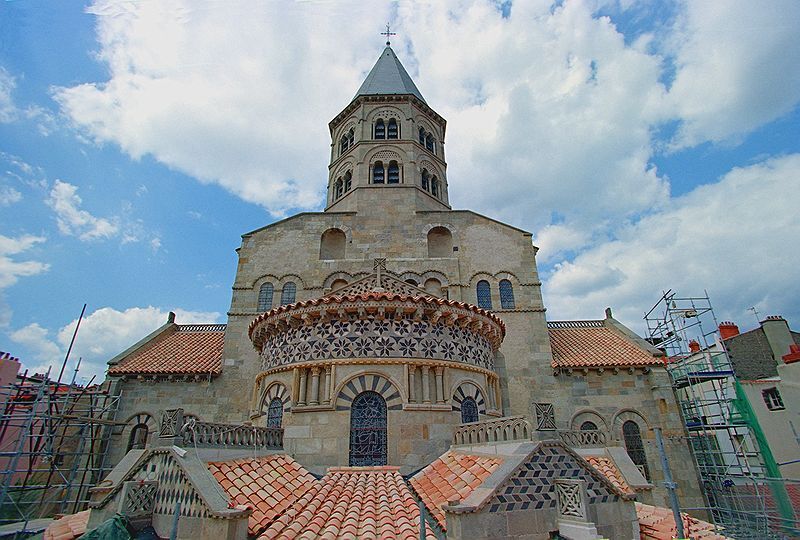
A typical Romanesque church: Church of Notre-Dame du Port de Clermont
Art was at the service of religion and faith, and most Romanesque buildings are characterized by architectural rigor and austerity.
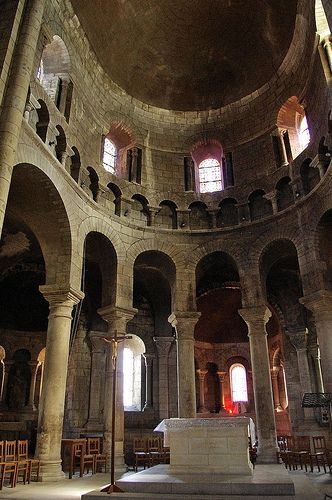
The stone vault at Saint-Étienne church in Nevers
The external shape is massive, with large stone arches. The height of the buildings remains limited. All wall openings are rounded, and bell towers are generally square (or polygonal) and not very pointed. The walls are adorned with numerous sculptures and paintings.
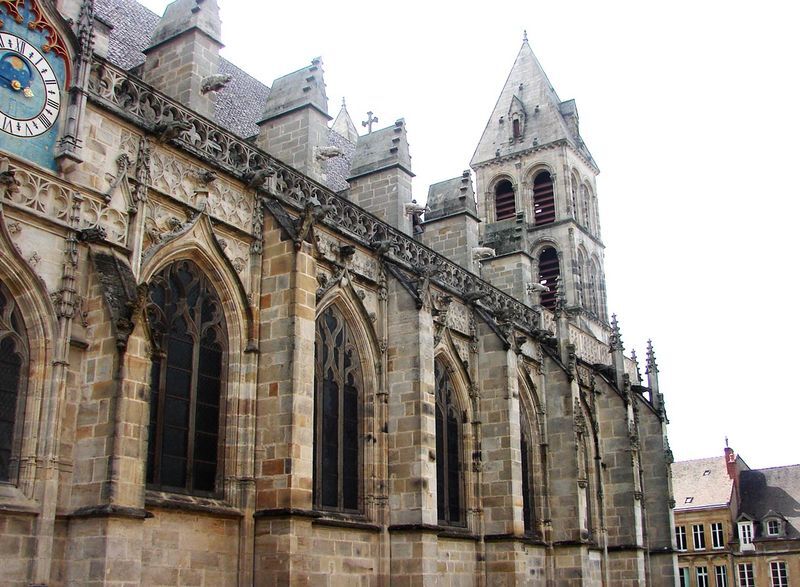
The square bell tower of Autun's Saint Lazare church
The walls are completed by buttresses. These are actually blocks that protrude from the outer walls. They serve to support the structure.
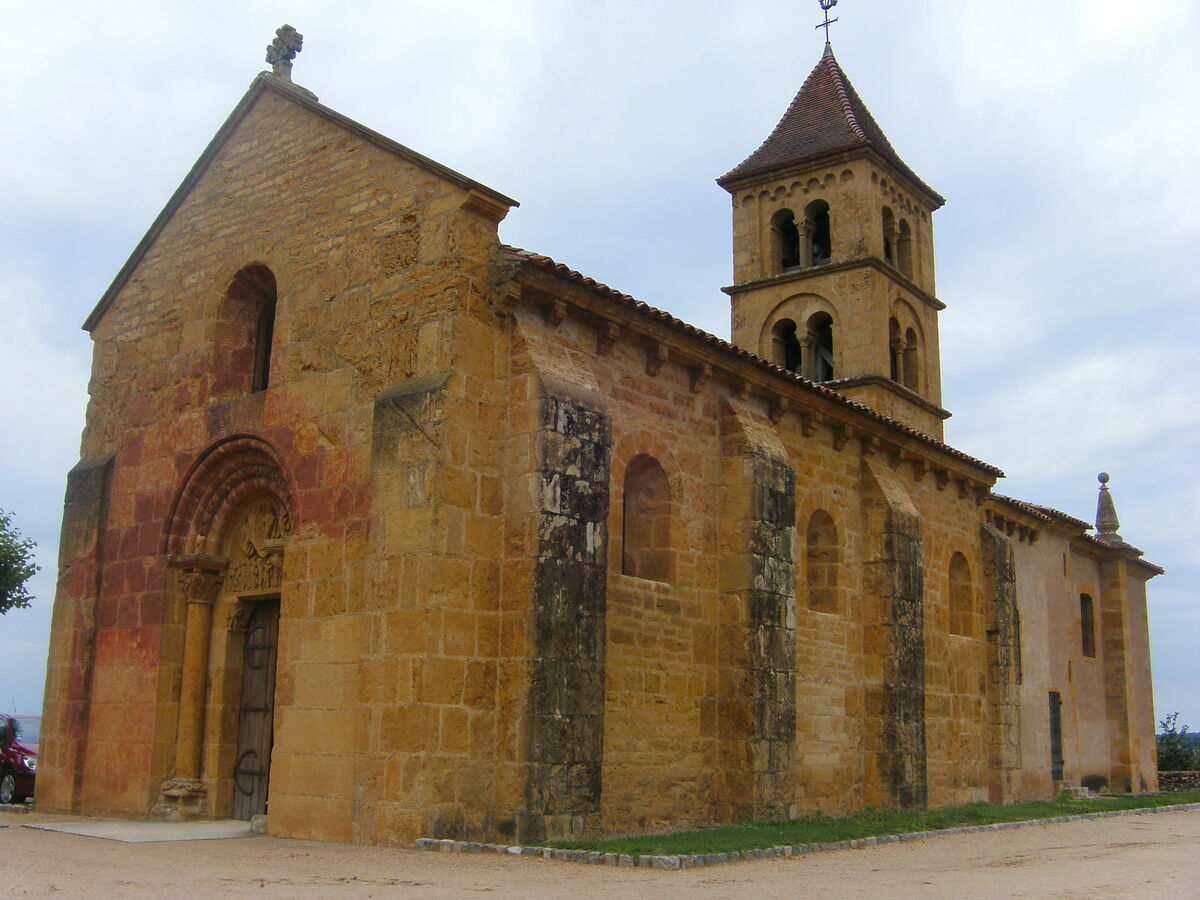
The buttresses of the church of Saints Pierre et Paul de Montceaux de l'Étoile
The church door is set beneath three arches, surmounted by a circular opening. Between the door and the arches is the lintel, usually ornate or engraved, and the tympanum, the semi-circular space between the arch and the lintel.
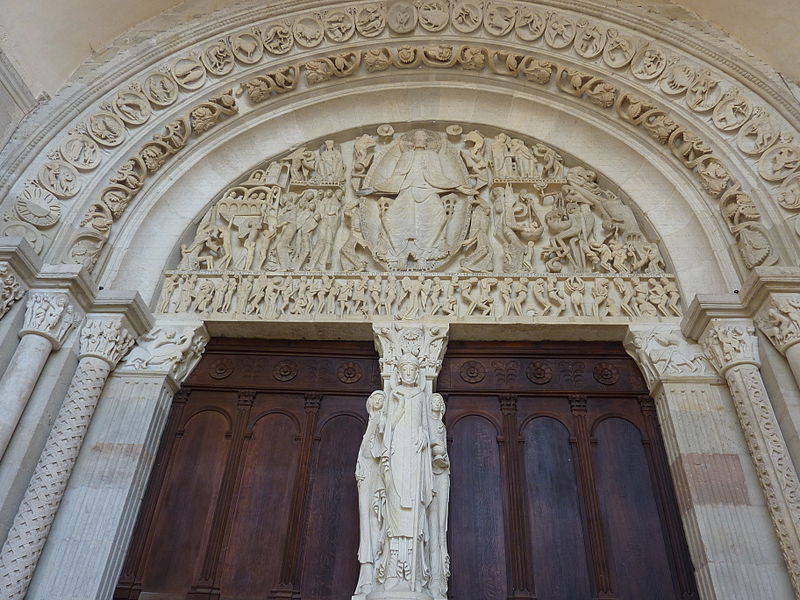
The door, lintel and tympanum of the church of Saint Lazare in Autun
The semi-circular arch is the arch used in Romanesque art. This arch forms a perfect semicircle.
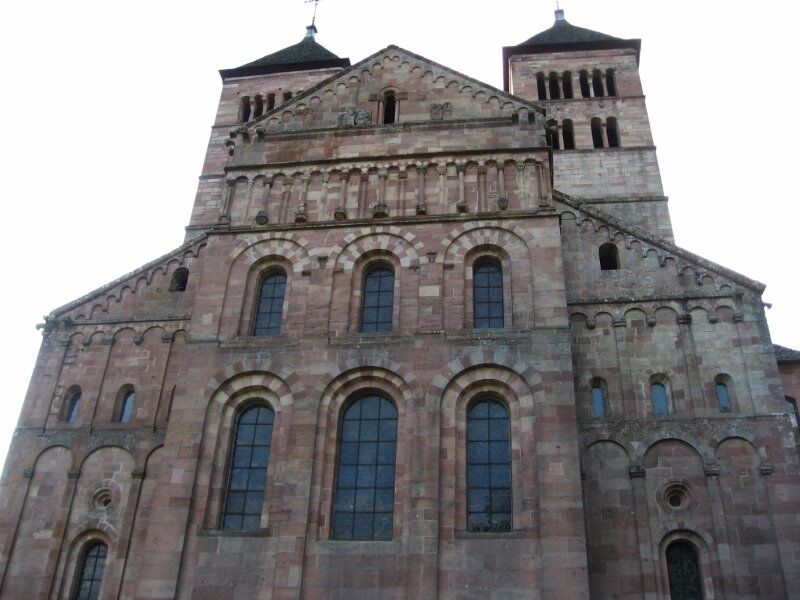
Round-arched windows carve out the walls of Murbach abbey church
The vault is also designed in the same spirit as the semicircular arch, generally forming a half-cylinder. The capital links the arches of the vault to the supporting columns.
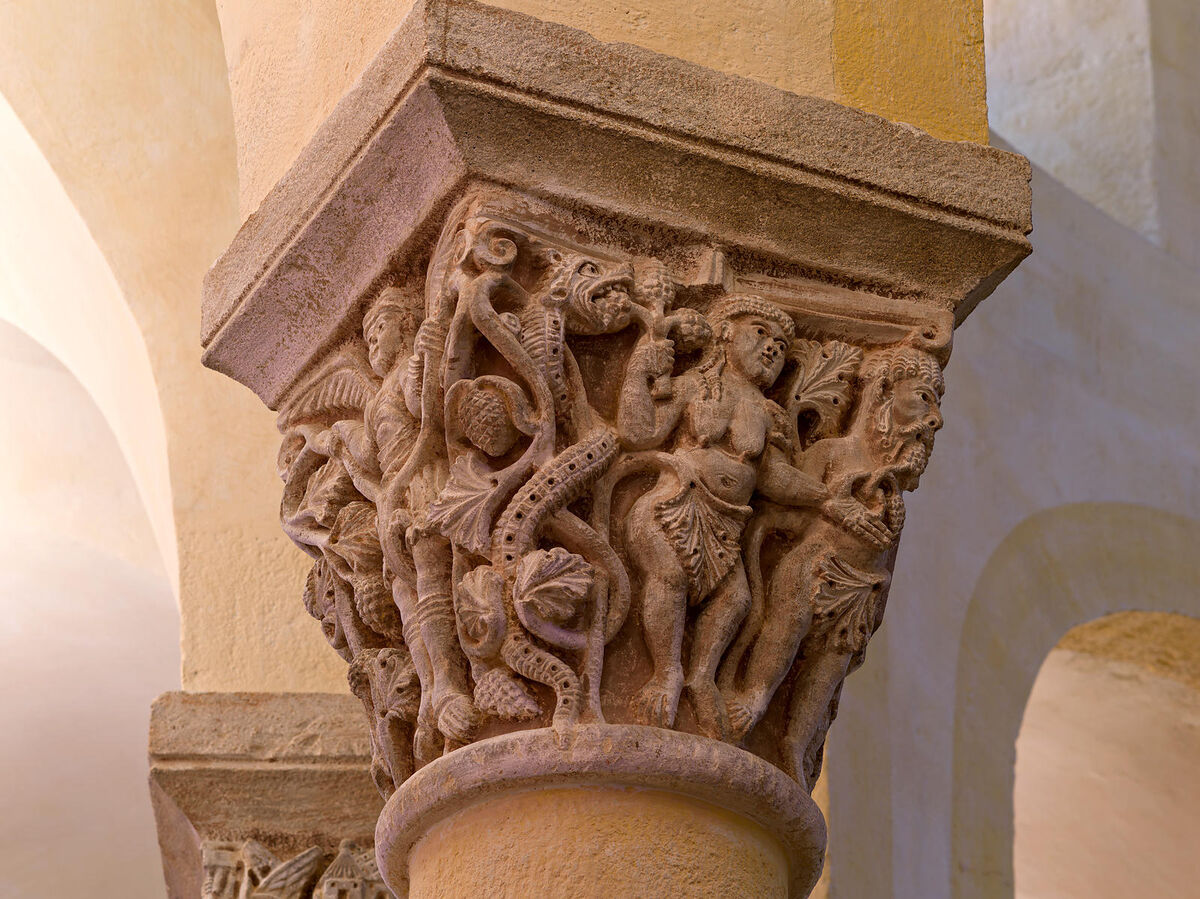
One of the carved capitals in the church of Notre-Dame du Port in Clermont.
Sometimes, the church consists of two naves, a main one and a transverse one. It is this transverse nave (also known as the transept) that gives many Romanesque churches their cross shape. Romanesque churches also had crypts accessible to all. Crypts were small recessed cavities containing saintly relics.
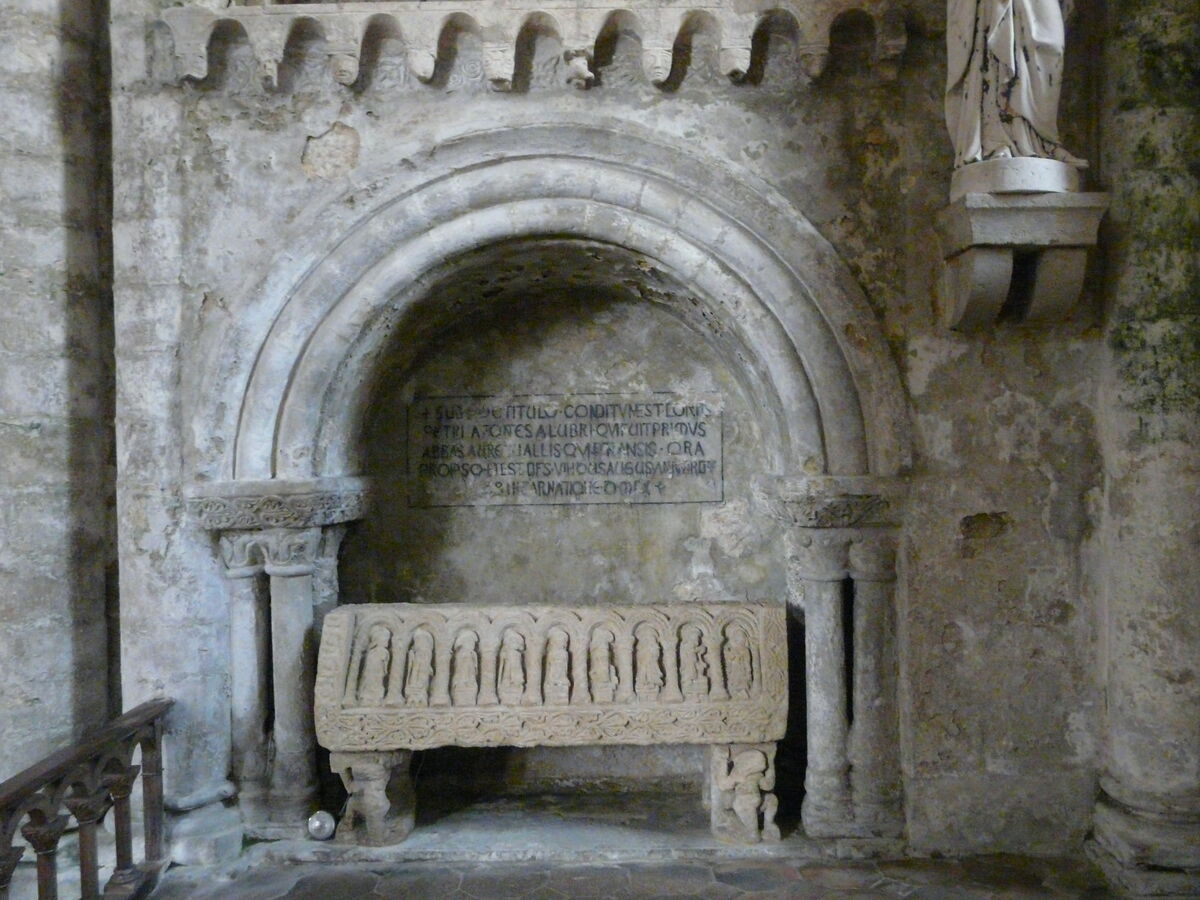
The crypt of the Airvault church contains a tomb
All these new features were made possible by technical innovations in construction. Although the workers didn't use much lifting equipment, they still managed to erect these churches of impressive dimensions and technical refinement. What's more, stone was now extracted directly from quarries, enhancing its quality. The floors of these buildings were generally made of rammed earth. In some places, however, floors were covered with a huge colorful mosaic or stone paving.
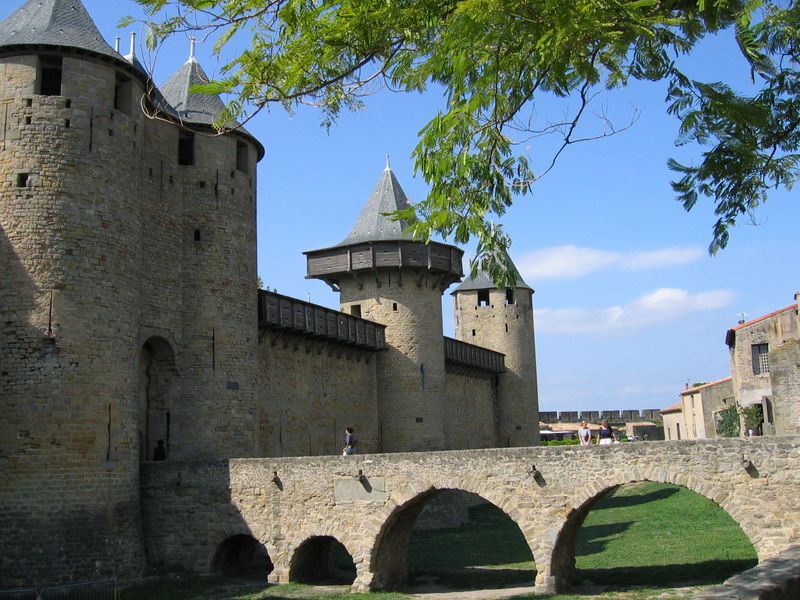
The city of Carcassonne is a fine example of Romanesque architecture, especially with its château.
Romanesque sculptors gave free rein to their imagination when designing their creations. In fact, they created a number of sculptures from an imaginary or dream world, often inspired by myth and folklore. This is why many of these sculptures feature imaginary beasts (dragons, griffins). Sculptures were integrated into the structure of buildings, adorning walls and columns, and decorating crypts, cloisters and churches. In fact, every free space was often occupied by a sculpture.
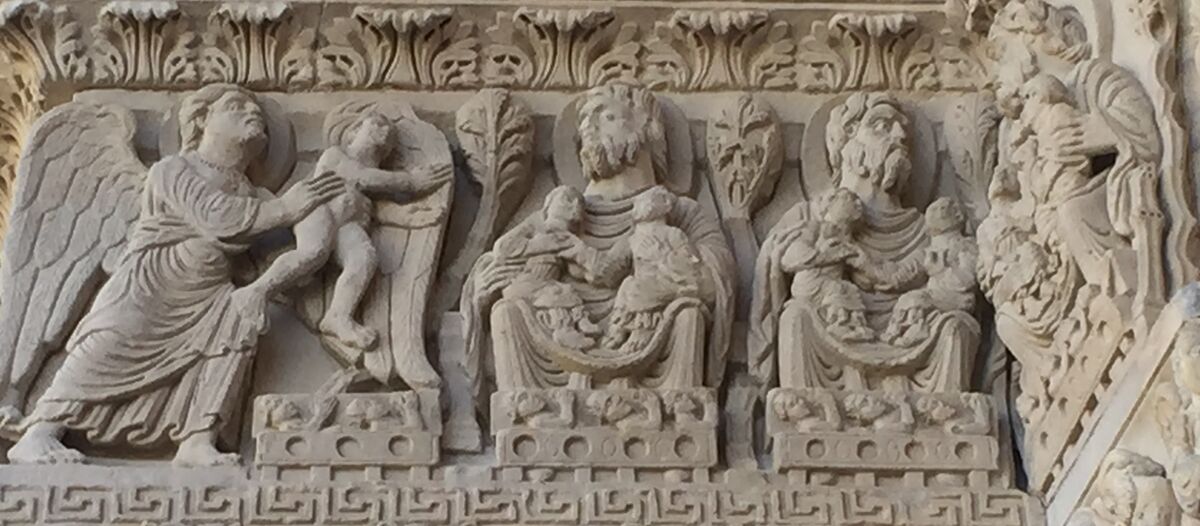
The facade of the church of Saint Trophime in Arles is richly decorated with sculptures.
In addition to decorating the premises, sculptures also played a role in transmitting knowledge. Sculptors often illustrated biblical subjects, making connections between the Old and New Testaments. The Christian episodes depicted by these sculptures thus served to increase religious fervor. More and more sculptures depicted scenes with several characters, whether from everyday life or from the Bible. Other sculptures featured fantastical beasts, imaginary plants or geometric motifs. All sculptures were painted in bright colors.
Painting was also used to decorate religious buildings. Many churches were decorated with large-scale frescoes. These were generally painted while the mortar on the wall was still damp. This practice helped to preserve the frescoes.

One of the frescoes in the Nohant Vicq church
The artists embellished their paintings with numerous details, lending a realistic style to their works. The subjects of the paintings were taken from popular manuscripts, everyday or folkloric references, or great sacred themes. Virtually every available surface was painted or covered with mosaics. However, the use of mosaics for decorative purposes declined during the Romanesque period, as the technique was rather expensive. Painters used bright colors such as yellow ochre, red, green, white and black.
Other arts practised during the Romanesque period included enamelling (the practice of ornamentation) and illumination (imagery on manuscripts), as well as lettering (decorating the first letters of a manuscript) and stained-glass windows (many openings were decorated with coloured stained-glass windows, although these were not as large or as numerous as those of the Gothic period).